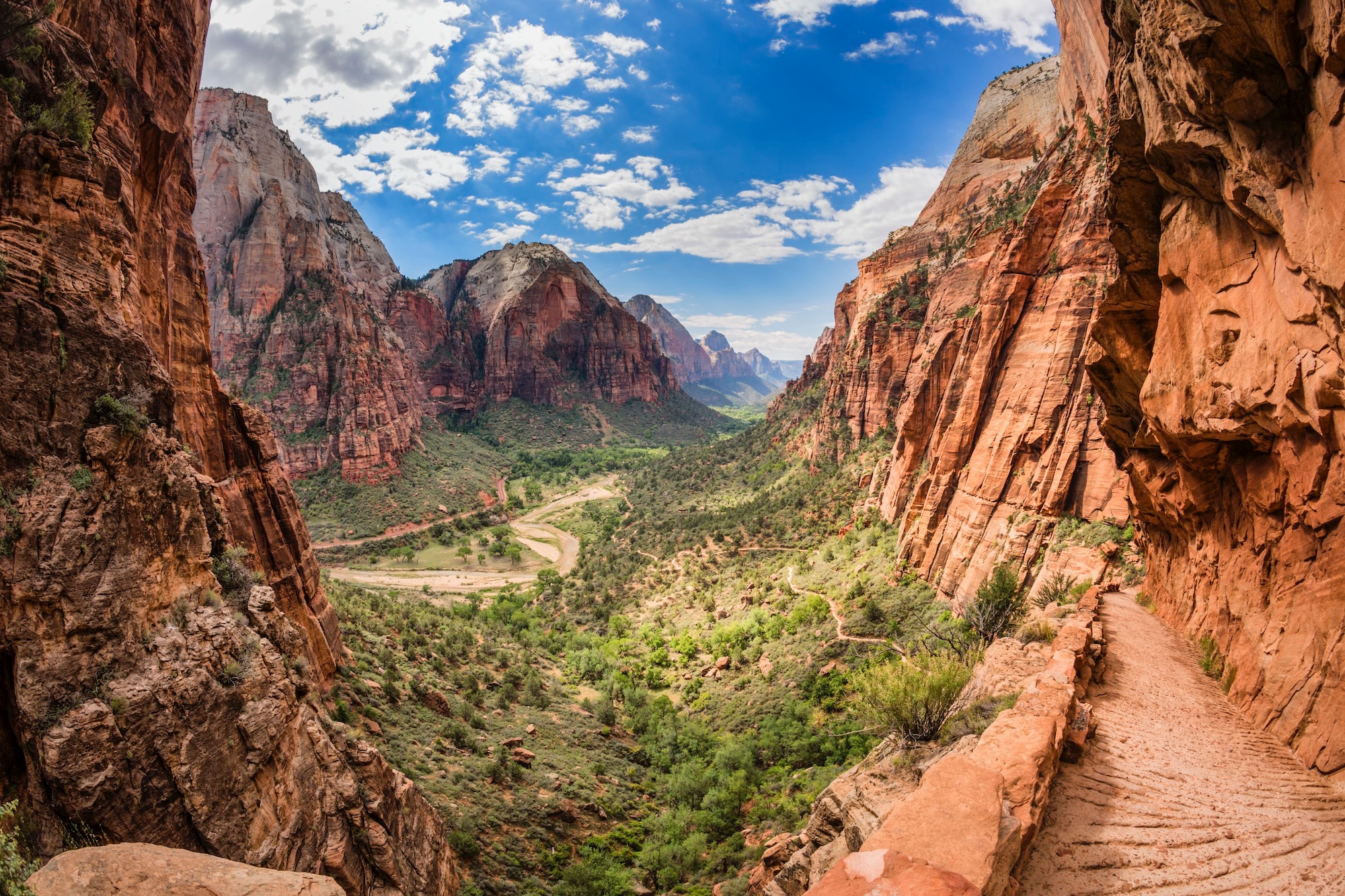The following list is designed for a non-guided, non-winter trip in Zion National Park. If you’re part of a commercial trip, check with your trip provider to see what items the guide provides.
Included in this list are the Ten Essential Systems you should have on every backcountry trip: navigation; sun protection; insulation; illumination; first-aid supplies; fire starter; repair kit and tools; nutrition; hydration; emergency shelter. To learn more, see our Ten Essentials article.
Equipment
- Backpack and raincover
- Lightweight dry bags (optional water protection for wading in creeks)
- Tent with guylines and repair sleeve
- Tent footprint (optional)
- Sleeping bag (40°F+)
- Sleeping pad (closed-cell foam or pack a repair kit)
- Whistle, plus signaling mirror
- Multifunction watch with altimeter (altimeter feature is optional)
- Knife or multi-tool
- Compass
- GPS (optional)
- Map(s) with good topographic and water-source details
- Route description or guidebook
- Trekking poles (optional)
- LED headlamp with extra batteries
- Water treatment system and backup
- Stove and fuel
- Matches or lighter
- Cookset, dishes, bowls, utensils, cups (measuring/drinking)
- Food storage (rodent-resistant)
- Gear repair kits; duct tape strips
- Fire starter (for emergency survival fire)
Clothing and Footwear
- Wicking, quick-drying underwear
- Wicking, quick-drying sports bra
- Wicking, quick-drying long underwear
- Wicking, quick-drying T-shirt and long-sleeve shirt
- Quick-drying pants or shorts
- Fleece jacket or vest, or insulated jacket or vest
- Fleece pants (optional)
- Waterproof/breathable rain jacket
- Waterproof/breathable rain pants
- Bandana or Buff
- Sun-shielding hat or ball cap
- Winter hat
- Gloves or mittens
- Hiking Boots or hiking shoes suited to terrain
- Ankle-high gaiters (optional)
- Socks (synthetic or wool) plus spares
- Water sandals (for fording streams and relaxing in camp)
- Swimwear (optional, but recommended)
Personal Items
- Sunglasses
- Sunglasses straps (optional)
- Water bottles (3) or hydration reservoirs (drink ½–1 qt. of fluid per hour)
- Sunscreen (high SPF; pack plenty and apply liberally)
- Lip balm
- Toothbrush with cover and biodegradable toothpaste
- Biodegradable soap
- Toilet paper
- Sanitation trowel
- Waste bag (required for The Narrows; recommended elsewhere)
- Hand sanitizer
- Women’s hygiene items
- Personal wipes
- Plastic zip-lock bags
- Insect repellent
- First-aid kit (see our First-Aid Checklist)
- Venom extractor (optional, for snakes, scorpions, spiders, wasps, etc.)
- Camera or helmet cam and extra memory cards (optional)
- Binoculars (optional)
- Cell phone (don’t rely on service)
- Satellite messenger or personal locator beacon (optional)
- Portable power device (optional)
- Field guide; star identifier (optional)
- Outdoor journal, pen and reading material (optional)
- National Parks pass
- Backcountry permit
- Credit card; small amount of cash
- Trip itinerary left with friend and under car seat
Food
Quantity varies depending on activity and length of trip.
- Breakfast (oatmeal, granola, freeze-dried breakfast, etc.)
- Lunch (bagels, summer sausage, cheese, smoked salmon, etc.)
- Dinner (pasta, couscous, rice, freeze-dried dinner, etc.)
- Snacks (cookies, GORP, jerky, candy bars, dried fruit, etc.)
- Energy gels
- Energy bars
- Electrolyte replacement drink mix (pack plenty)
- Extra day’s supply of food
